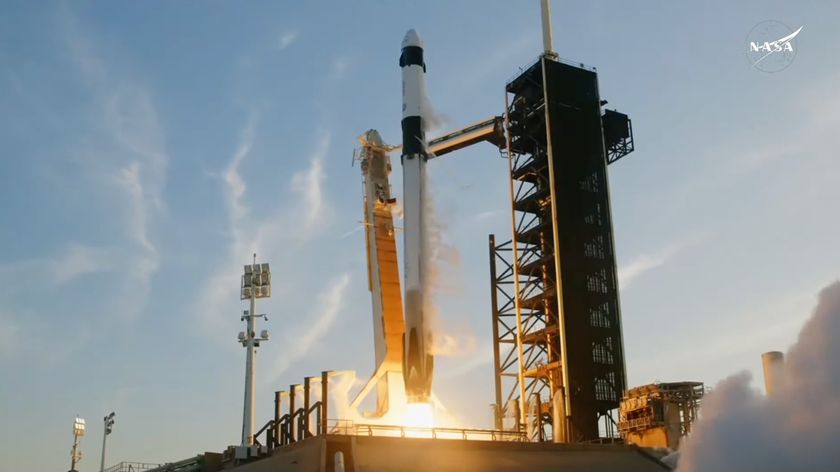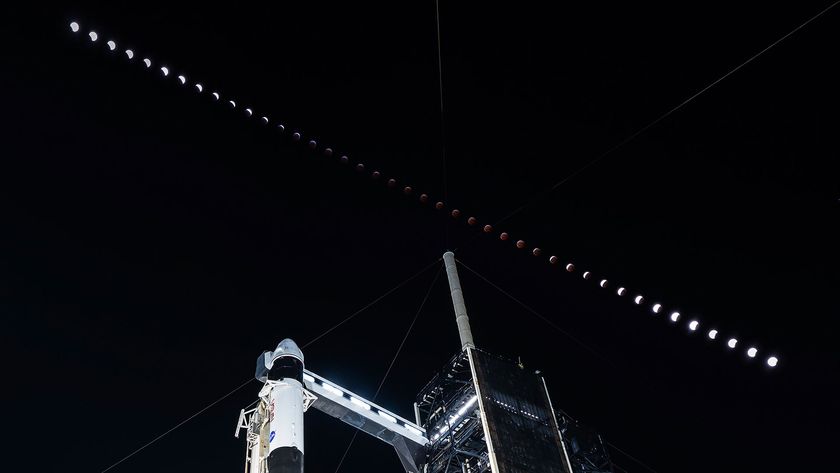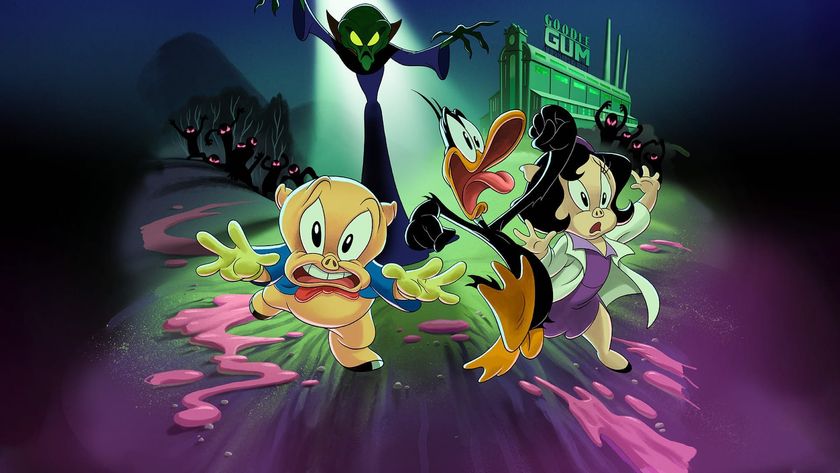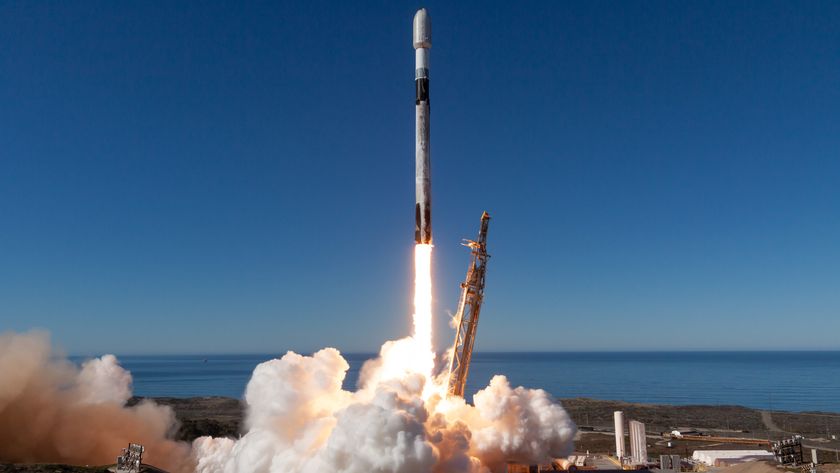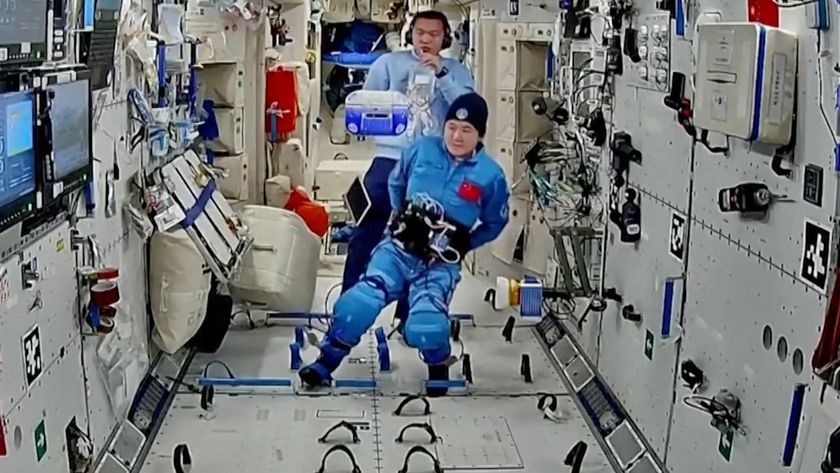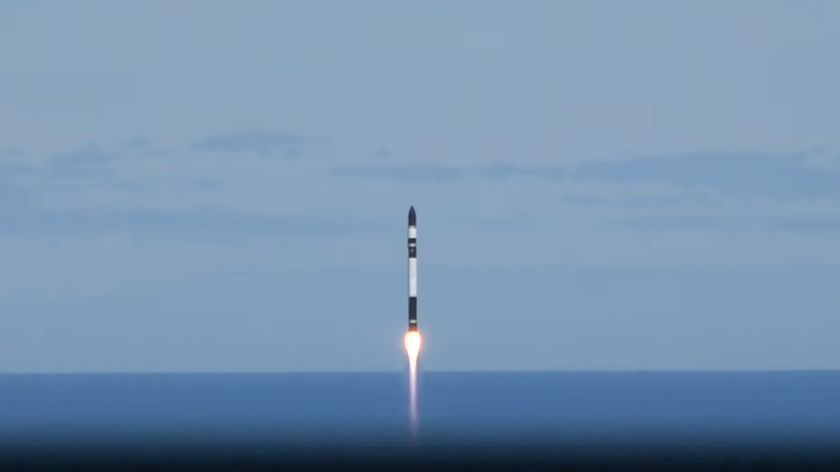Spectacular Milky Way Maps Show Our Galaxy in New Light
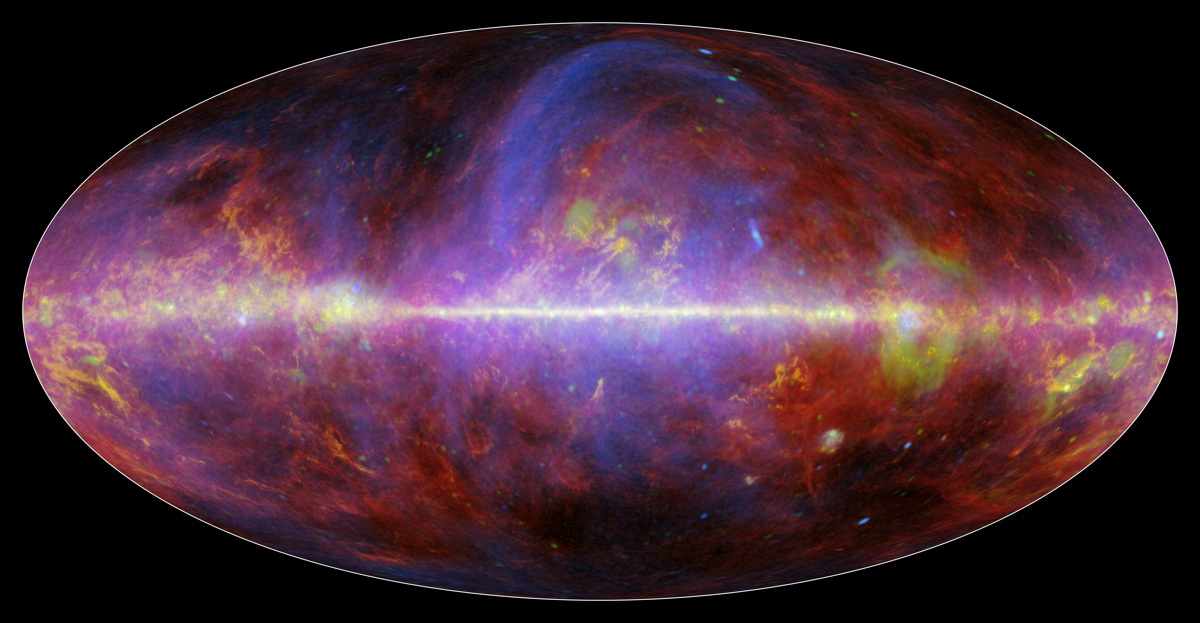
The Milky Way galaxy is made up of more than just stars and a new series of galactic maps has captured that diversity of gas, dust, particles and magnetic fields in amazing detail.
The new Milky Way galaxy maps are based on observations by the European Space Agency's prolific Planck space observatory. They show the Milky Way in four distinct color signals that, when combined into a single mosaic, create a hypnotic view of our home galaxy.The Planck satellite observed the oldest light in the universe during its mission. In the new Milky Way maps, red colors indicate dust, yellow is gas, green is high energy particles, and blue is the magnetic field.
"Planck can see the old light from our universe's birth, gas and dust in our own galaxy, and pretty much everything in between, either directly or by its effect on the old light," Charles Lawrence, the U.S. project scientist for the mission at NASA's Jet Propulsion Laboratory in Pasadena, California, said in a statement.
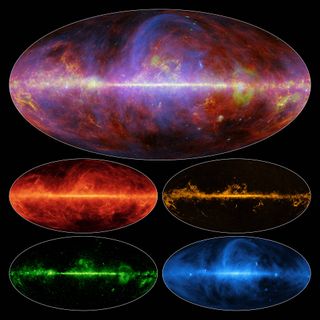
Everything in between
The Planck satellite was built to detect microwave light, which made it sensitive to something called the cosmic microwave background, or light left over from the big bang. Planck's study of the cosmic microwave background is helping scientists answer questions about the very early days of the universe, such as when the first stars were born.
With its microwave vision, Planck can detect more than just the cosmic microwave background.
One of the new Milky Way images released by the Planck collaboration is an overview that shows four separate galaxy views, as well as the final view of them combined. The red version (upper left) show the heat coming from dust throughout the Milky Way galaxy. Planck can capture this thermal light even though the dust is extremely cold — about minus 420 Fahrenheit (minus 251 Celsius).
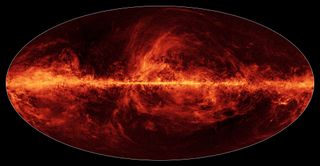
The yellow version (upper right) shows carbon monoxide gas, which is concentrated in areas where new stars are being born. Meanwhile, the blue image (lower right) shows light created when charged particles get caught up in the Milky Way's magnetic field, and are pulled along like a swimmer in a current. The particles accelerate to nearly the speed of light and begin to radiate. The green image (lower left) shows light that is created by free particles that zip past one another without quite colliding. This kind of light is often associated with hot, ionized gas near massive stars.
Get the Space.com Newsletter
Breaking space news, the latest updates on rocket launches, skywatching events and more!
The $795 million Planck satellite launched in 2009 and collected data for just over four years before being decommissioned in 2013. Last week, the collaboration released the results of a much-anticipated joint study with the BICEP2 collaboration. In March 2014, BICEP2 announced what some scientists took as evidence of inflation in the early universe and evidence of gravitational waves. But the results of the join analysis showed that BICEP2's measurements were contaminated by space dust.
Follow Calla Cofield @callacofield. Follow us @Spacedotcom, Facebook and Google+. Original article on Space.com.
Join our Space Forums to keep talking space on the latest missions, night sky and more! And if you have a news tip, correction or comment, let us know at: community@space.com.

Calla Cofield joined Space.com's crew in October 2014. She enjoys writing about black holes, exploding stars, ripples in space-time, science in comic books, and all the mysteries of the cosmos. Prior to joining Space.com Calla worked as a freelance writer, with her work appearing in APS News, Symmetry magazine, Scientific American, Nature News, Physics World, and others. From 2010 to 2014 she was a producer for The Physics Central Podcast. Previously, Calla worked at the American Museum of Natural History in New York City (hands down the best office building ever) and SLAC National Accelerator Laboratory in California. Calla studied physics at the University of Massachusetts, Amherst and is originally from Sandy, Utah. In 2018, Calla left Space.com to join NASA's Jet Propulsion Laboratory media team where she oversees astronomy, physics, exoplanets and the Cold Atom Lab mission. She has been underground at three of the largest particle accelerators in the world and would really like to know what the heck dark matter is. Contact Calla via: E-Mail – Twitter


